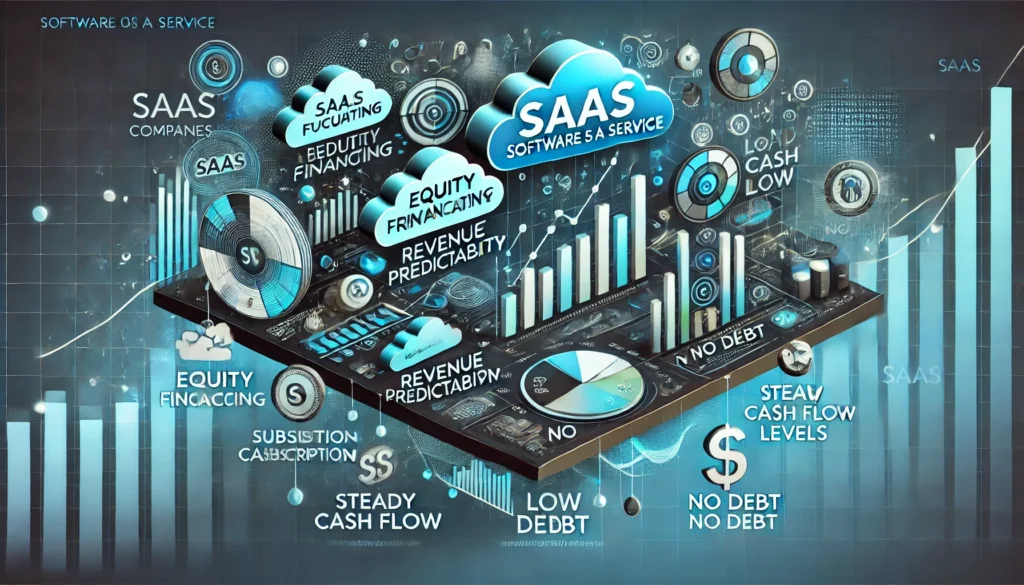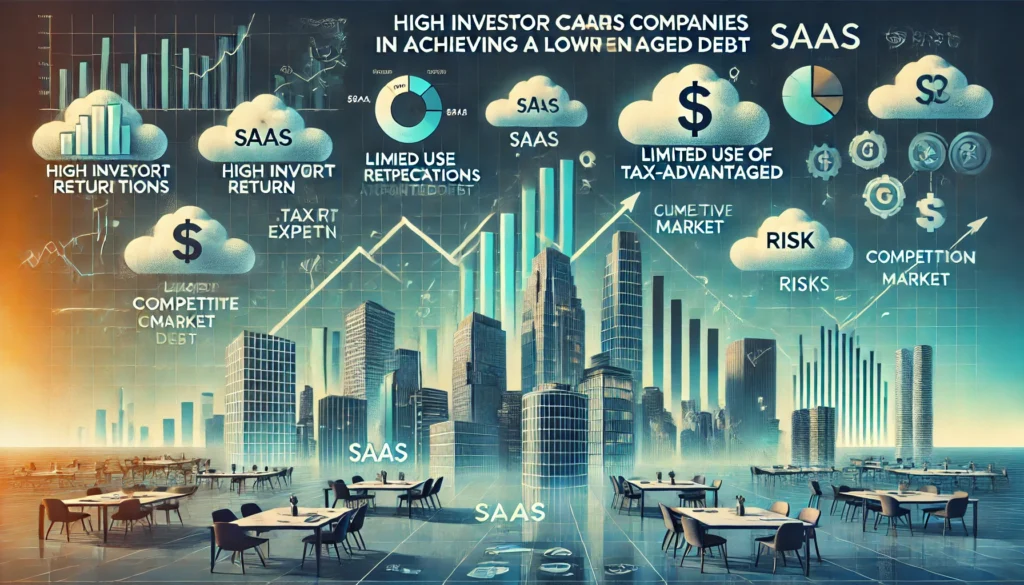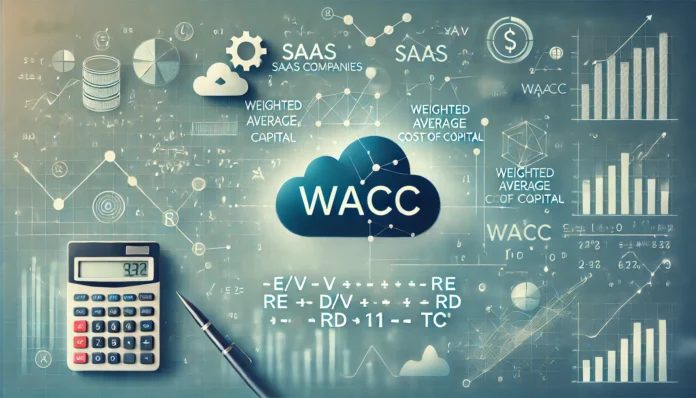When it comes to financial performance measures for different industries, the Weighted Average Cost of Capital (WACC) is one of the main indicators that investors and analysts take into account. Do SaaS companies have a lower WACC compared to other industries? SaaS (Software as a Service) firms are usually the talk of the town due to the kind of business they operate and prospect for growth. The answer to this query will be uncovered by referring to the components of WACC and the features of SaaS enterprises.
Understanding WACC
WACC is a metric that stands for the company’s cost of financing, putting the costs of equity and debt together based on their respective proportions in the company’s capital structure. The formula is:
WACC = (E/V) × Re + (D/V) × Rd × (1 – Tc)
Where:
- E = Market value of equity
- D = Market value of debt
- V = Total value of capital (E + D)
- Re = Cost of equity
- Rd = Cost of debt
- Tc = Corporate tax rate
The WACC value is directly associated with the effectiveness of a company’s capital arrangement and this is a situation where a company might finance its activities at a low cost.
Characteristics of SaaS Companies
SaaS businesses are a perfect example of innovators operating in an unstable sector that is characterized by non stop subscribing, as well as little extra costs in managing the company and high initial expenses for the production of software. These are some of the factors that can affect the WACC formula:

Equity Financing Dominance
Particularly, SaaS startups’ growth stages typically make use of equity financing as their main source of funding. These startups have little in the way of tangible assets which makes the acquisition of large debt tricky. As a matter of fact, equity financing can be the most pricey (Re) hence, their general company WACC can hit a snag because of this.
Revenue Predictability
The subscription model is one way that SaaS companies have the ability to predict which and how much they will reap at the end of every month. This makes them look more reliable to the investor and hence brings down the cost of equity (Re) one more example where SaaS companies are the choice of the investors because there are no big risks of failure.
Low Debt Levels
Unlike businesses that are hesitant to lend to them because of their few tangible assets, SaaS companies in many cases require little or no debt. Therefore, it affects the rate of debt (D/V) in the WACC equation. What this means is that, more often than not, you will get a greater WACC because of the lost tax shield that results from the less debt but, at the same time, the probability of the company going bankrupt will be reduced as well.
Also read: Does Titanium Stick to a Magnet?
Factors That Contribute to a Lower WACC for SaaS Companies
SaaS companies benefit from high growth potential, positive market perception, and low capital expenditures, which collectively reduce their financing costs and contribute to a lower WACC.
High Growth Potential
Rapid growth is pretty common among SaaS companies, and their growth is usually driven by scalable business models and expanding markets. High growth potential draws in investors, which causes the required rate of return (Re) to decrease due to the fact that investors are willing to get immediate returns that are lower in exchange for long-term gains. The growth potential is a very important aspect and so it is no wonder that SaaS companies may have a lower WACC.
Market Perception and Valuation
Valuations and the perception of risk are substantially impacted by the investors’ imaginings of the SaaS industry as a place where innovation is paramount and a future-proof one. Such, in turn, can be connected to the cost of equity (Re), as well as to the total WACC. Hence, the SaaS companies’ goals are usually to exploit such disparities in perception in order to decrease the WACC.
Minimal Capital Expenditures
Unlike traditional industries, SaaS companies do not require significant capital expenditures for manufacturing or physical infrastructure. This reduces the need for debt financing (D) and contributes to a potentially lower WACC. In this context, do SaaS companies have a lower WACC becomes a vital question for stakeholders.
Challenges in Achieving a Lower WACC
SaaS companies face challenges like high investor return expectations, limited use of tax-advantaged debt, and competitive market risks, which can increase their WACC.

Investor Expectations
The SaaS companies might be perceived as the ones with less risk, at the same time, investors often require startups along with companies in highly competitive markets to provide them the highest possible returns hence the advantages obtained from predictable revenue streams can be canceled out.
Limited Debt Utilization
Equity financing is more expensive compared to debt because equity is not associated with tax benefits and investors expect a higher return which leads to a higher WACC.
Also Read: How to Invest in Project Omega: A Comprehensive Guide
FAQs
A. Why is WACC important for SaaS companies?
WACC stands for the weighted average cost of capital, and it is a parameter indicating the cost of capital in these companies, which does have an impact on their valuation and on the decisions about investments in the company during the appropriate period. The lower WACC allows SaaS companies to utilize simpler methods for project finance and, therefore, to improve their investments.
B. Do SaaS companies always have a lower WACC compared to traditional businesses?
No, they do not. In spite of the benefits of SaaS companies such as stable revenue and high growth, their reliance on equity funding can occasionally be one of the reasons for the higher WACC. The outcome changes based on the company’s conditions.
C. How can SaaS companies reduce their WACC?
SaaS companies can minimize their costs of capital by the establishment of measures that increase revenue predictability, that intensify market perception and that enhance operational efficiency. Other than these, the management can expand their financing sources and profit from the use of the capital structure as per the requirements.
Conclusion
So, do saas companies have a lower WACC, yes but this solution is highly related to their development stage, the way the market sees them, and platforms that do not require direct IT work. In general, established SaaS companies which have already established a strong position in the market and a flow of predictable revenue are more likely to be incentivized by a low WACC compared to startups or businesses in traditional industries. By virtue of their unique business models and right capital optimizing SaaS companies are in a good position to drive consistent growth and financial efficiency.
Over time, while the SaaS business model has potential advantages which can contribute to a lower WACC, it still has a different impact on each company’s situation and the market dynamics. Therefore, investors and analysts need to be mindful of all these aspects while analyzing the financials of a SaaS company.
Also Read: Does Sonic Take Google Pay? A Detailed Guide


